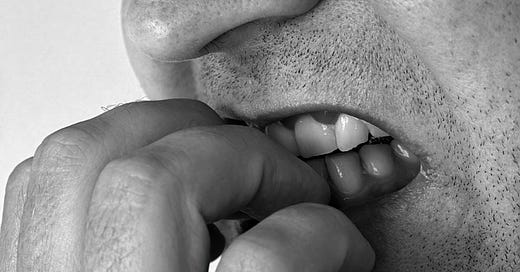The human body is often a battleground where inner turmoil manifests in physically destructive ways. Self-destructive body disorders are a series of compulsive behaviors that involve individuals directly harming their physical selves. Examples include cutting, hair-pulling (trichotillomania), nail-biting, and skin-picking. These destructive habits go far beyond casual fidgeting, creating distress, shame, and, sometimes, severe physical consequences. This essay will explore the complexities of self-destructive body disorders, their underlying causes, and the paths toward healing.
At their core, self-destructive body disorders often stem from deep-seated emotional pain. Individuals coping with anxiety, depression, overwhelming stress, or past trauma may use these behaviors as maladaptive coping mechanisms. The act of self-harm can provide a momentary sense of control amidst internal chaos. These habits may ease emotional numbness, release built-up tension, or create a physical manifestation of inner anguish. These destructive behaviors can act as a twisted attempt to communicate pain that a person might struggle to express through other means.
The psychological roots of self-destructive body disorders run deep. Early childhood experiences, such as abuse, neglect, or significant losses, can disrupt healthy emotional development. Such circumstances might leave an individual with a deep-rooted sense of worthlessness, difficulty regulating emotions, or a tendency toward dissociation. Furthermore, underlying mental health conditions often amplify the likelihood of developing these behaviors. The intense distress surrounding disorders like depression, anxiety, and obsessive-compulsive disorder can increase one's reliance on destructive coping strategies.
Despite the perceived temporary relief they offer, self-destructive body disorders create a vicious cycle. While a behavior like cutting might temporarily numb emotional pain, the shame and consequences of self-harm ultimately intensify the inner turmoil. These disorders can leave a person feeling helpless, isolated, and consumed by self-loathing. In severe cases, the physical consequences of these habits can debilitate, from infections and scarring to serious bodily harm.
Breaking the cycle of self-destructive body disorders requires a combination of approaches. Psychotherapy is an essential aspect of treatment, where a mental health professional can work with the individual to unravel the underlying triggers and develop healthier coping mechanisms.
Cognitive-behavioral Therapy can help individuals challenge negative thought patterns and cultivate healthier emotional regulation strategies. Psychodynamic Therapy is important in helping people verbalize their issues instead of acting them out in self-destructive ways. Identifying and effectively managing mental health conditions underlying the behaviors is crucial to recovery. Sometimes, medications with psychotherapy are helpful.
Healing from self-destructive body disorders takes time, patience, and a profound sense of self-compassion. The journey causes replacing harmful behaviors with healthy alternatives. Techniques like mindfulness meditation, exercise, or creative expression help shift focus and ground the individual in the present while addressing the underlying emotional distress.
Self-care becomes critical as individuals relearn to manage emotions and nurture their bodies safely and positively. Building a strong support system is also important, as friends, family, and recovery support groups offer encouragement and help on this journey.
Examples of Self-Destructive Bodily Harm:
Trichotillomania, also known as hair-pulling disorder, is a complex psychological condition that affects millions of individuals worldwide. People with trichotillomania experience an irresistible urge to pull out their hair, resulting in noticeable hair loss and significant distress.
The most prominent symptom of trichotillomania is the recurrent urge to pull out hair from the scalp, eyebrows, eyelashes, or other body parts. Hair pulling provides a temporary sense of relief or gratification. Still, it is often followed by guilt, shame, and embarrassment. Over time, the repeated pulling can lead to noticeable hair loss, leaving large patches of baldness. The result is more emotional distress and social isolation.
2. Nail biting, known as onychophagia, is a common habit where individuals repetitively bite or chew their nails. This behavior affects people of all ages, ranging from mild to severe. Although it may appear harmless, nail biting can negatively affect physical and emotional well-being. This essay will explore various nail-biting aspects, including its causes, effects, and methods for overcoming this habit.
Nail biting can be triggered by several factors. For many individuals, anxiety and stress play a significant role. People may resort to nail biting to cope with tension or nervousness. Additionally, those who exhibit perfectionistic tendencies or strongly need control may use nail-biting to channel emotions or relieve boredom.
3. Nonsuicidal Self-Injury Nonsuicidal self-injury (NSSI) involves deliberately harming one's body without the intention of suicide. It's a way individuals may express deep distress, cope with emotional pain, or communicate feelings they find hard to put into words. Common methods include cutting, burning, or hitting oneself. NSSI is often linked to psychological issues such as anxiety, depression, or trauma. It's a sign that someone needs support and, possibly, professional help to deal with underlying issues.
4. Skin picking, also known as dermatillomania or excoriation disorder, is a mental health condition characterized by the repetitive urge to pick at one's own skin. This can lead to skin lesions, scarring, and significant emotional distress. Individuals with this disorder may pick at healthy skin, minor skin irregularities, lesions, or scabs, often to relieve tension or anxiety.
Self-destructive body disorders represent a range of behaviors where individuals harm their bodies as a coping mechanism for psychological distress. These disorders often stem from underlying mental health issues, such as depression, anxiety, or trauma. They signify a need for compassionate support and effective treatment strategies to address the distress's physical manifestations and psychological roots. Recognizing and understanding these disorders is crucial for providing timely and appropriate help to those affected.





I was a nail-biter, starting around 3 years old, and engaged in NSSI until a couple years ago. The two biggest moments in my healing process were when I said to my mom, “I’m not afraid anymore” and when I looked into the mirror and said to myself “I’m sorry I hurt you.” It now makes sense why I was the way I was. Thank you.
Very helpful information. Recommended reading.